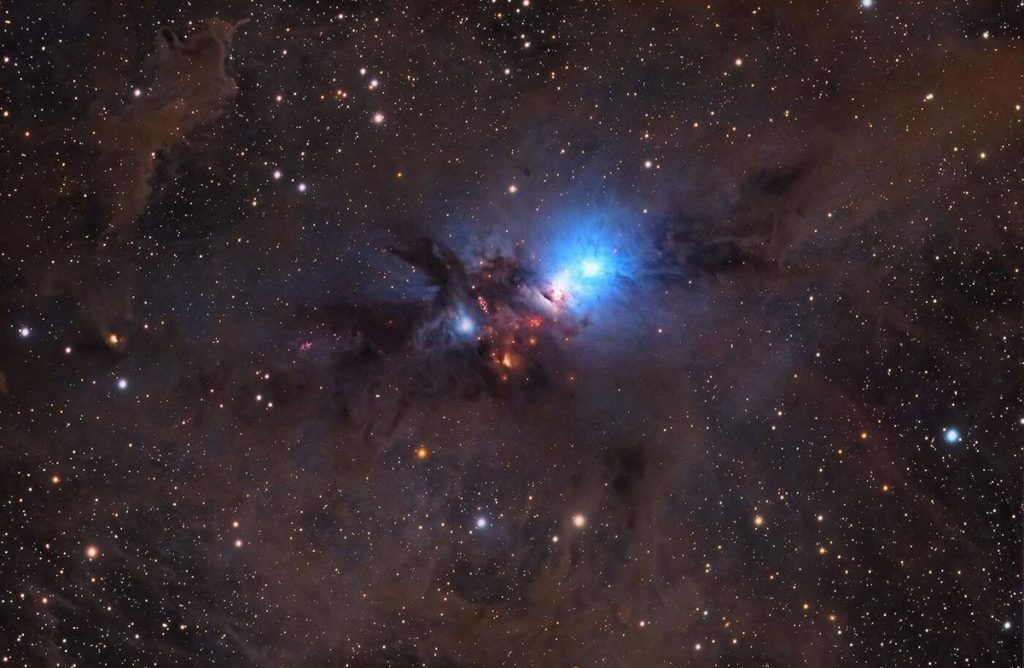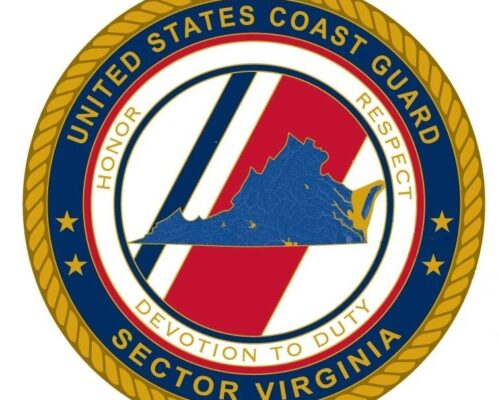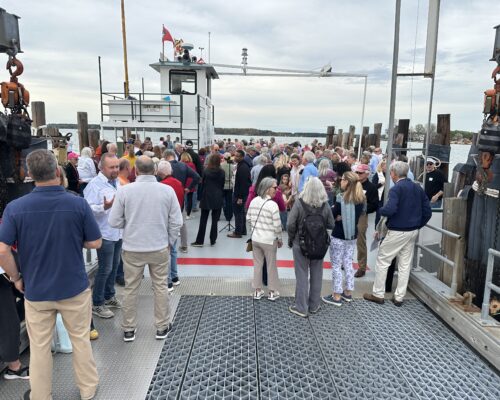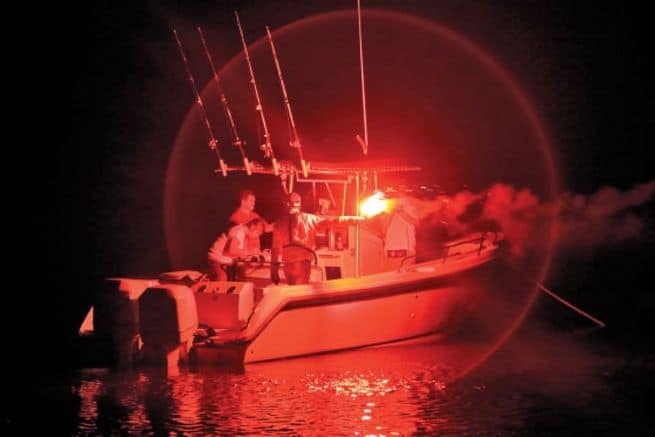By Ad Crable, Bay Journal News Service
During the day, there’s no especially compelling reason to visit Pennsylvania’s tiny Cherry Springs State Park. It’s little more than a former airplane landing strip carved from a mountaintop in the sparsely populated and heavily forested north central part of the state.
But after dusk, a dark curtain drops on the 82-acre open space, revealing a canvas of night sky wonders the likes of which can be viewed in few other places on Earth.
Cherry Springs, about 60 miles due north of State College, at the very edge of the Chesapeake Bay watershed, is rated the best place in the eastern U.S. to view a truly dark sky—something only 10 percent of Americans have experienced. In 2017, Smithsonian magazine ranked it among the eight best places in the world for stargazing, along with remote spots in Chile, the Canary Islands, New Zealand, Hawaii, Namibia and Canada. It was the International Dark-Sky Association’s first Gold Tier park.
It is a mecca for astronomers, astrophotographers and anyone drawn to stargazing — a go-to spot for seeing the celestial wonders routinely visible to our ancestors but now drowned out by light.
With no “light pollution” from the few nearby towns to wash out the night sky, the Milky Way, nebulae, constellations, meteors, the aurora borealis, the International Space Station, Andromeda galaxy and other star attractions are visible to telescopes, binoculars and even the naked eye.
On a clear night—and there are typically 60–85 of them here annually—some 10,000 stars are visible to the naked eye.
“You come here to learn, and you come here to gaze into the heavens like you haven’t seen before,” Brandon Lewis of Woodbridge, Va., told me as he set up set up two high-tech telescopes, a camera and two laptop computers that he would use to photograph two different nebulae over two nights.
No sooner had the sun set than a mass of white, like exploding clouds, rose among the evergreen trees. They weren’t clouds, of course, but stars, gas and space dust that collectively appear as translucent white to our eyes. Think 400 billion stars or so.
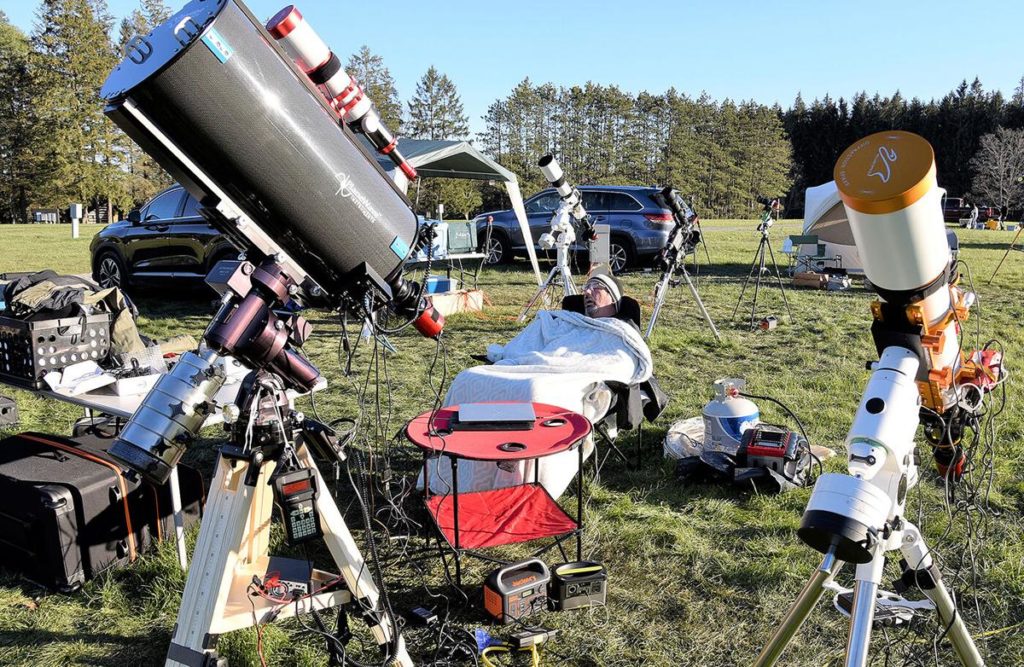
Even though temperatures had fallen into the 20s, about 100 people, many of them families, made their way into the Night Sky Public Viewing Area fashioned from the old unpaved runway. They sat in portable chairs cocooned in blankets or lay flat on the ground wrapped in sleeping bags. All had their eyes toward the sky.
Shouts of glee perforated the chilly night air. “I just saw one!” a woman squealed at the sight of a meteor. “Oh, look at the Big Dipper!” said another. I looked and the dipper was upside down, seemingly pouring stars into the night sky. I had never seen the constellation so enormous.
“In most cases, they’ve seen the moon and a bright star or two and that’s it. They see the Milky Way and go crazy,” said Curt Weinhold, a photographer from nearby Coudersport who gives dark-sky photography lessons.
The only artificial light came from the occasional glow of a red-filtered flashlight or lantern. White light is banned in the field because it can compromise a person’s night vision for up to 15 minutes. Great mounds of dirt have been placed beside the parking lot to keep headlights from spoiling the star party. Even the bulbs in the restroom are red.
One knot of stargazers represented about 18 members of a Philadelphia outdoors group called It’s Better Outdoors. “This makes you realize how small we are and how big the universe is,” a woman from the group said, briefly interrupting her focus on the sky. “We’re just a speck of time.”
For much of its existence, Cherry Springs was one of the least-used state parks in Pennsylvania. It had no trails, few trees and only a primitive campground.
Then, one weekend in the mid-1990s, former park manager Chip Harrison was driving home from visiting his mother and spied someone with weird equipment camping in one of the fields.
The man said he was looking for a dark sky so his telescope could view otherwise hidden wonders. Intrigued, Harrison met again with the man, who produced a light pollution map showing a dark blob in northcentral Pennsylvania. Cherry Springs was right in the middle.
Harrison, who had been seeking a way to bring more people to the area, took the stargazing ball and ran with it.
Recognizing the preciousness of the untainted night, the state Department of Conservation and Natural Resources in 2000 designated Cherry Springs as its first and only dark-sky state park. A number of night amenities and public programs — viewing events, laser-guided night-sky tours and night-sky photography workshops— have been added through the years to secure its place among the best dark-sky places to visit.
Today, the park draws 85,000–90,000 people a year. On any clear night, year-round, there will be stargazers there.
On one side of PA Route 44—designated in 2019 by the state as “Highway to the Stars”—is the Night Sky Public Viewing Area. Here, the general public can set up and stargaze all night. For free.
On the other side of the highway is the Overnight Astronomy Observation Field. This area is used by more serious stargazers with telescopes, and particularly by astrophotographers who use combinations of cameras, computers, telescopes and rotating tripods.
It’s serious business on this side of the road. Users pay a per-night fee and have access to electricity, Wi-Fi and randomly scattered concrete pads for their expensive equipment. At dark, a shrouded gate closes to keep people from driving in and spoiling exposures. If you turn on so much as a dome light in your vehicle, be prepared to be peppered with outrage. It’s not uncommon for these high-tech folks to doze in camp chairs during the day, then tend to their equipment all night.
You can read this story in its entirety, including tips on visiting Cherry Springs State Park, at bayjournal.com.

